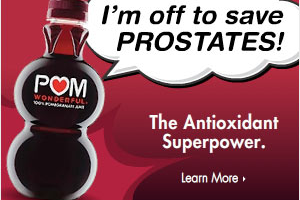The FDA has just concluded two days of hearings on the safety and labeling of genetically modified (GM) salmon. I’ve been collecting comments about this and will add a few of my own.
USA Today: Let’s begin with Elizabeth Weise’s clear, insightful summary of what this is about. She summarizes the situation with GM salmon in a nifty Q and A format:
Q: What happens next?
A: Nothing soon. Before issuing a decision on the application, FDA will publish an Environmental Assessment of the salmon, followed by a required 30-day comment period. The agency would then determine whether it would file a Finding of No Significant Impact or an Environmental Impact Statemen….then use those findings to make a decision on whether or not to allow the sale of the salmon. The agency has said it has no set timeline for reaching a decision. Were the agency to decide to approve the sale of the salmon, it would take two years before the first crop was ready, company officials say.
Food Chemical News (September 20): reports that AquaBounty’s CEO has no intention of restricting GM salmon farms to Panama. At the FDA hearing, he “forecast a spread of transgenic salmon operations from a proposed site in Panama to other countries, including the United States.”
Oops. The FDA had to remind him that his company’s application is for Panama only, and any other sites would require supplemental applications from the firm.” The FDA said it was “not interested in AquaBounty’s future business plans.”
FoodNavigator.com reporter Caroline Scott-Thomas predicts that the hearings will lead to no recommendation.
The FDA’s Veterinary Medicine Advisory Committee (VMAC) did not vote or make a recommendation at the end of the hearings, saying that it does not yet have sufficient data…After two days of hearings, a Food and Drug Administration (FDA) advisory panel has called for more research to decide whether genetically engineered salmon is safe for consumption.
The New York Times says that the advisory group favored approval of the GM salmon, but that this could take ages.
Food Chemical News (September 21) says that most speakers at the hearing on GM labeling did not want it to be mandatory. It quotes Greg Jaffe, the director of biotechnology at Center for Science in the Public Interest (CSPI), as opposing mandatory labeling. Apparently, Jaffe:
urged AquaBounty to require its customers to provide “real” voluntary labeling on food products, such as “AquaBounty salmon,” “fast-growing salmon” or “environmentally friendly salmon”….He agreed that “no ingredients from a genetically engineered source” would be acceptable language provided there’s a comparable GE product in the marketplace.
Why would a representative of a consumer organization oppose mandatory labeling? For that, go to
Jill Richardson’s lengthy analysis of FDA’s actions, written for Grist. She lays out some of the more complicated issues, and takes a tough look at the biases of the committee members.
Washington Post: Lindsey Layton writes about the debates over labeling (I’m quoted).
A Washington Post poll found 78% of respondents to be worried about the health and safety risks of GM salmon.
Meanwhile, in the UK, the new government has stopped a scheduled public dialogue about GM foods. That’s one way to handle it. All those pesky consumers don’t want it? Too bad for them.
My interpretation: of course the public does not trust genetically modified foods. The foods are not labeled. If the biotech industry and the FDA want the public to trust them, they need to label the GM salmon and all the other GM foods in the marketplace.
The public wants the right to choose. The public should have the right to choose.
The issue of GM foods cannot just be about safety.
My mantra on this one: Even if genetically modified foods are safe, they are not necessarily acceptable.
I was a member of the FDA’s Food Advisory Committee in 1993 when, under pressure from Monsanto, the agency rejected labeling of GM foods. I wish the FDA had listened to me and the other consumer representatives on the committee, all of us convinced that labeling is essential for promoting trust, and giving the public a choice. And, we said, it’s the right thing to do.
The FDA now has a chance to redeem it’s bad decision. I hope they take this opportunity and decide to require labeling.
Footnote: I wrote about all this in my book, Safe Food: The Politics of Food Safety, just published in a new edition in July. In preparing the second edition seven years later, I was surprised by how little about food biotechnology had changed. The issues have not changed. The field is stuck. Labeling is one way to break the stalemate. Let the public have a choice. I’ll bet doing that will solve a lot of problems.


